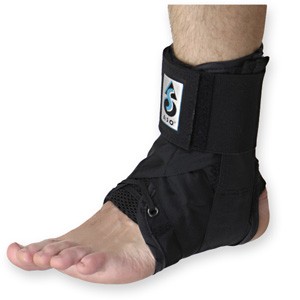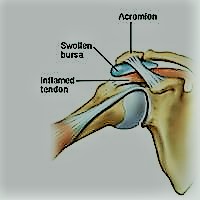Ankle Sprains
Most people go over on their ankle( ankle sprains) at some stage in their lives. Usually they go over outwards and it is the outside of the ankle that gets injured. The ankle is stabilized by muscles, tendons and ligaments. Usually when you go over, it is an instantaneous thing where the muscles have failed to switch on and stabilize and the strain falls on the ligaments to protect you. The muscles also get strained as they try to correct the situation mid accident firing up too late. There are a lot of ligaments in the ankle so the stability is quiet strong. Luckily, usually the ligaments strain rather than rupture. If they rupture the sound will almost be like the sound of a tree branch breaking. You most likely will hear it. Luckily, because there are so many ligaments, even if one or two rupture, you can usually rehab the ankle fully. Protection such as strapping/taping or the likes of an ASO ankle brace may be needed thereafter, if some ligaments are torn fully, and you are involved in a sport where rapid twisting and turning are part of the game and the training.
Treatment
Treatment of ankle sprains is pretty straight forward. One important point is that often most of the pain is due to the swelling that occurs rapidly post injury, so it is important to limit this. Immobilize the foot straight away. Start on NSAIDs(non steroid anti-inflammatories) immediately. Ice immediately(wet towel around iced, around the foot for about 10 mins every half hour or so). There are cold compression therapy machines which are excellent for this kind of injury. Obviously they are not always readily available. They probably are a worthwhile investment for competitive clubs as they are not overly expensive.
A few days after ankle sprains physio can be commenced. This often includes gentle mobilization of the joints of the foot, massage to ease of strained/spasmed muscles and remove some of the swelling through the lymph nodes etc. Different grades of damage require slight modifications in approach but the basic idea is to get rid of inflammation, get movement back in the joints of the foot and relax down the strained muscles. Home rehab given to the patient involves self mobilization of the foot along with progressive strengthening exercises. Usually the condition does not require too many physio sessions but rather a progressive strengthening program prescribed by the physio and followed by the patient. Sometimes if pain lingers, the fibular head may have dropped slightly during the injury(so it is misplaced slightly) and it may need to be gently mobilized back into place using something like ”Mulligan Technique”. The movement of the fibular head can have been tiny, but the shift can cause considerable pain to linger if not rectified. A good physio will always have done this during treatment anyway.

Rehab progression will involve things like calf raises, heel to toes taps, proprioception exercises, standing on one foot, standing up on toes of one foot, hopping on one foot, walking , jogging, jumping in various directions. It is recommended that an ASO ankle brace be worn during training and playing for several months after the injury to prevent recurrence. Strengthening work and controlled training is done without the brace to ensure continued strengthening of the ankle. The ankle will not weaken as a result of the ankle brace as the muscles still have to fire during play, but continued strengthening and a build up of controlled exercise intensity without the ankle brace should also take place for full recovery.
Physiotherapists in Tralee phone 086-7700191
 Sub-acromial bursitis is a common cause of shoulder pain that is usually related to impingement of the bursa between the supraspinatus muscle tendon and the acromion bone(see diagram). Bursae(single = bursa) are fluid-filled sacs that help reduce friction wherever tendons move under or over bone. The Supraspinatus muscle runs along the top of the shoulder blade and inserts via the tendon onto the top of the arm(humerus bone). This muscle is used to lift the arm up sideways . Above the supraspinatus tendon and under the acromion there is a bursa. When this bursa gets inflamed and swollen it can become trapped under the acromium bone of the shoulder causing pain and inflammation.
Sub-acromial bursitis is a common cause of shoulder pain that is usually related to impingement of the bursa between the supraspinatus muscle tendon and the acromion bone(see diagram). Bursae(single = bursa) are fluid-filled sacs that help reduce friction wherever tendons move under or over bone. The Supraspinatus muscle runs along the top of the shoulder blade and inserts via the tendon onto the top of the arm(humerus bone). This muscle is used to lift the arm up sideways . Above the supraspinatus tendon and under the acromion there is a bursa. When this bursa gets inflamed and swollen it can become trapped under the acromium bone of the shoulder causing pain and inflammation.